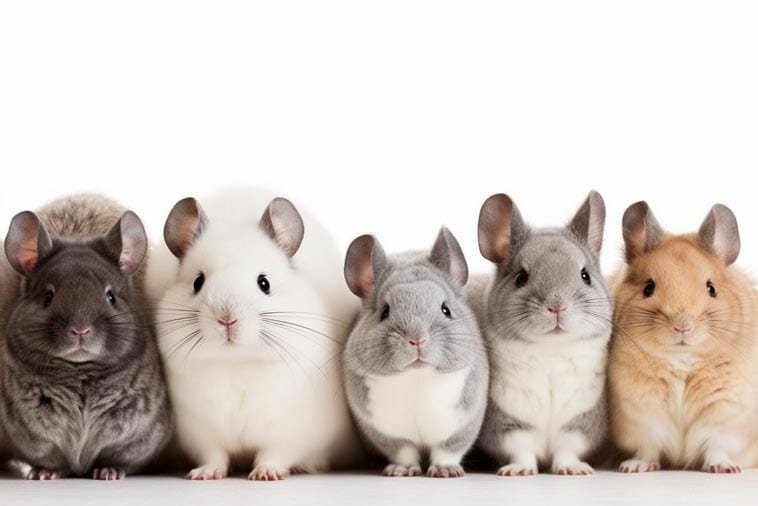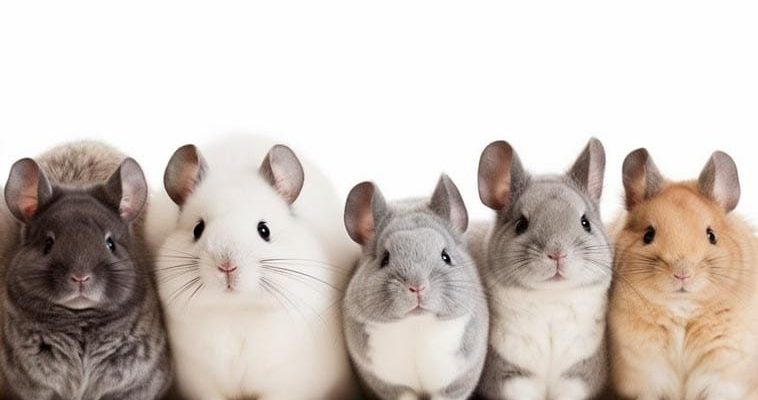
Breeding standard grey chinchillas isn’t just about picking two cute pets and letting nature take its course. It involves understanding genetics, health, and even temperament. So, let’s dive into the enchanting world of chinchilla genetics and breeding. You might be wondering how these little creatures inherit their traits or what to consider when breeding them. Don’t worry; I’ll break it all down for you.
Understanding Chinchilla Genetics
Genetics is like the blueprint of life for chinchillas, determining everything from their fur color to personality traits. A basic understanding of how genetics works can help you make informed decisions in breeding. Chinchillas inherit genes from both parents, which can be dominant or recessive. Here’s where things get interesting: the standard grey chinchilla has a specific genetic makeup that affects its appearance and health.
In genetics, color is often linked to specific genes. With chinchillas, the standard grey is one of the most common colors, and it results from a dominant gene. That means if at least one parent carries the gene for standard grey, the offspring will likely have that color. But that’s just the tip of the iceberg. The combination of genes can also influence other traits, such as fur texture and body size.
When breeding chinchillas, it’s like playing a game of chance. You hope for certain traits to come through in the offspring, but there are no guarantees. Sometimes, unexpected traits can appear, especially if you introduce new genetics into your breeding program. This is why understanding genetics is crucial. It can help you predict what the babies might look like and their potential health issues.
Common Traits in Standard Grey Chinchillas
Standard grey chinchillas are known for their striking appearance and gentle nature. Their dense, soft fur is typically a beautiful grey with a slight sheen, which many find appealing. This trait often serves as a primary goal for breeders aiming for aesthetically pleasing pets. But it’s not just about looks; understanding these traits can help you select the right breeding pairs.
Here are a few common traits you might notice in standard grey chinchillas:
- Fur Color: As the name suggests, their fur is grey. However, the shade can vary slightly between individuals.
- Size: Standard grey chinchillas are usually medium-sized, weighing around 400 to 600 grams.
- Temperament: Generally, they have calm and gentle temperaments, which makes them excellent pets.
These traits are not just for show; they also play roles in the chinchilla’s overall health. For example, the density of their fur can affect their ability to regulate temperature, which is crucial since chinchillas are sensitive to heat. Understanding these traits can help you provide a better environment for them.
Health Considerations in Breeding
Breeding chinchillas isn’t just about creating beautiful pets; it also means being responsible for their health. Just like humans, chinchillas can inherit health issues from their parents. Some common health problems found in chinchillas include dental issues, obesity, and respiratory problems. As a breeder, it’s vital to consider these factors when choosing mates.
To improve the overall health of your chinchillas, consider the following:
- Genetic Screening: Before breeding, screening your chinchillas for hereditary health issues can help minimize the risk of passing those on to their offspring.
- Balanced Nutrition: Providing a proper diet can prevent many health concerns, such as obesity and dental problems. Hay should be a staple in their diet.
- Regular Vet Visits: Keeping up with routine checkups can help catch any health issues before they become serious.
By focusing on health, you not only improve the quality of your chinchillas but also increase their lifespan and quality of life. Remember, a healthy chinchilla is often a happy chinchilla!
Tips for Responsible Breeding Practices
If you’re interested in breeding standard grey chinchillas, it’s essential to adopt responsible practices. This isn’t just about producing cute babies; it’s about contributing positively to the chinchilla community. Here are some tips for responsible breeding:
- Educate Yourself: Understanding the genetics and care requirements of chinchillas is foundational. Do your research, read books, and connect with experienced breeders.
- Breeding for Traits, Not Trends: Focus on breeding healthy chinchillas with desirable traits rather than chasing fads that may not prioritize health.
- Limit Breeding Frequency: Overbreeding can be stressful for chinchillas and lead to health issues. Allow time for recovery between breeding cycles.
By taking these steps, you not only contribute to the well-being of your chinchillas but also set a standard for others in the breeding community. After all, it’s about creating a legacy of healthy, happy pets.
Understanding Genetic Combinations
When it comes to breeding chinchillas, the genetic combinations can be quite complex. Think of it like mixing colors on a palette; the final shade depends on what you start with. For example, if you breed a standard grey chinchilla with a black chinchilla, you might end up with offspring displaying various shades of gray or even black fur.
Understanding dominant and recessive genes is key here. If you have two standard grey chinchillas, there’s a good chance their offspring will also be grey. But if you introduce a recessive gene, such as the agouti color gene, you may see different fur colors emerge. This element of surprise adds excitement to breeding but also requires a solid understanding of genetics.
It’s also crucial to consider the physical and behavioral traits that can come into play. Breeding two chinchillas with calm temperaments could yield offspring with similar personalities, while breeding a more energetic chinchilla might introduce variability. So, when planning your breeding, keep in mind not just the fur color but also the overall health and temperament traits you want to promote.
Building a Breeding Program
Creating a successful breeding program requires planning and commitment. It’s like setting up your own little factory where the end product is healthy, happy chinchillas. Here are some steps to consider when building your breeding program:
- Set Clear Goals: Decide on what traits you want to focus on, such as color, health, or temperament. This will guide your breeding choices.
- Create a Pedigree System: Keeping track of lineage helps you understand which traits might appear in future generations. It’s essential for maintaining genetic diversity.
- Manage Your Environment: Ensure your chinchillas have a comfortable and safe living space. Stress can affect breeding success and the health of newborns.
Implementing these steps can help you create a breeding program that not only produces chinchillas that look great but are also healthy and have friendly personalities.
Breeding and genetics in standard grey chinchillas is a fascinating journey that requires careful thought and a lot of love. From understanding the basics of genetics to implementing responsible practices, there’s a lot to consider. By focusing on health, temperament, and responsible breeding methods, you can make a positive impact on the chinchilla community.
So, whether you’re looking to breed for beauty or health, remember that each chinchilla is a unique individual with its own set of traits. Enjoy the process, and take pride in the little lives you’re helping to create. After all, breeding chinchillas can be a rewarding experience that deepens your connection with these amazing creatures!

